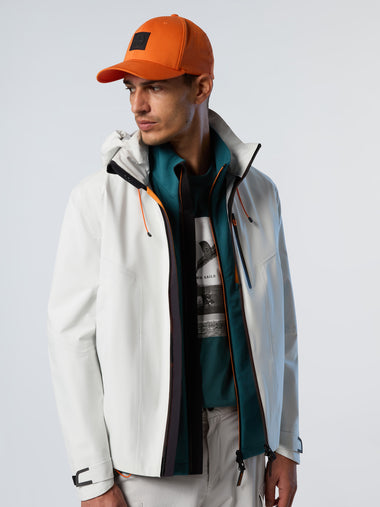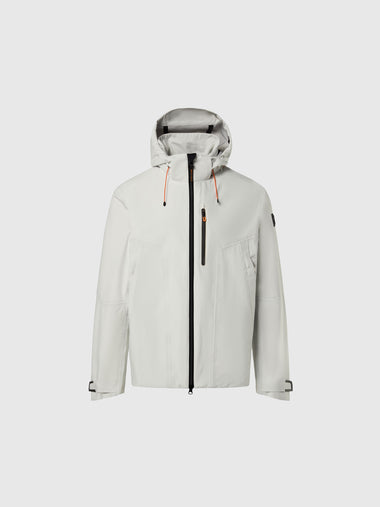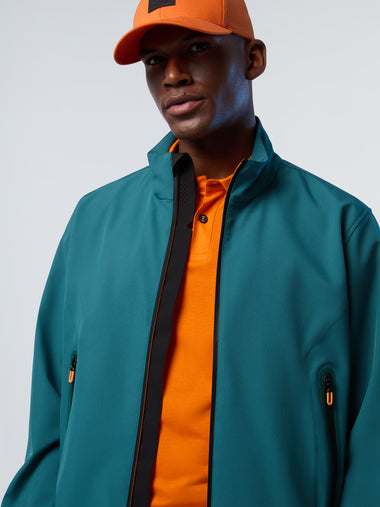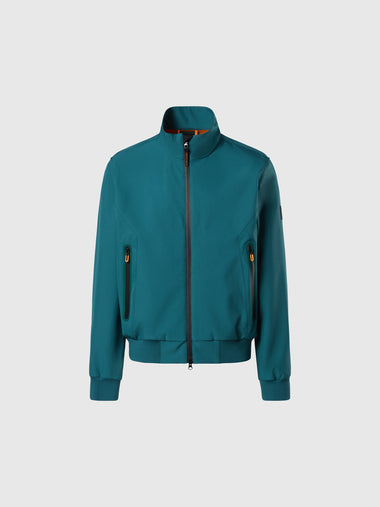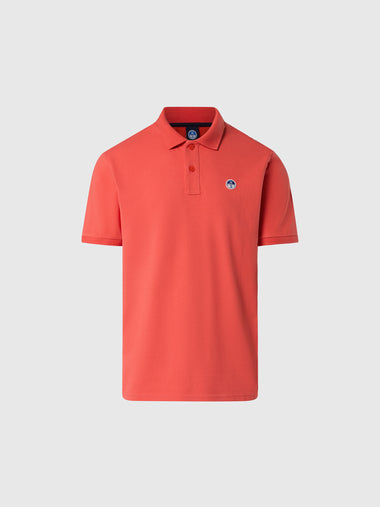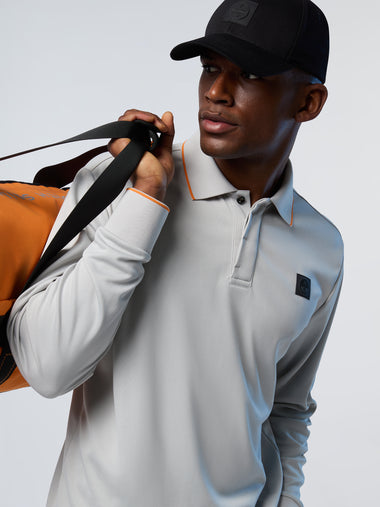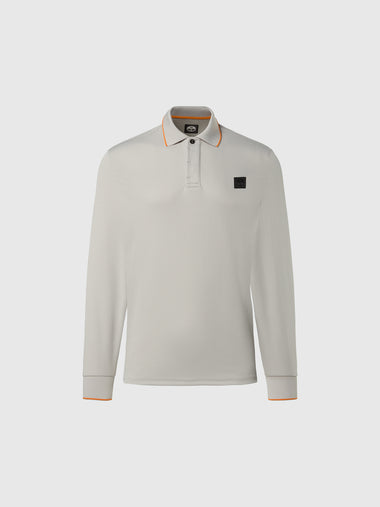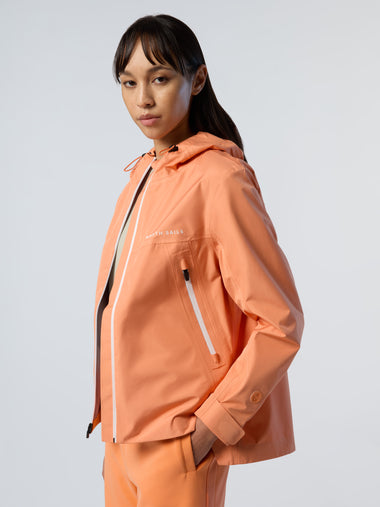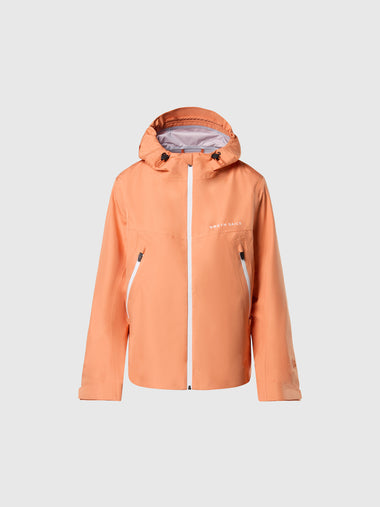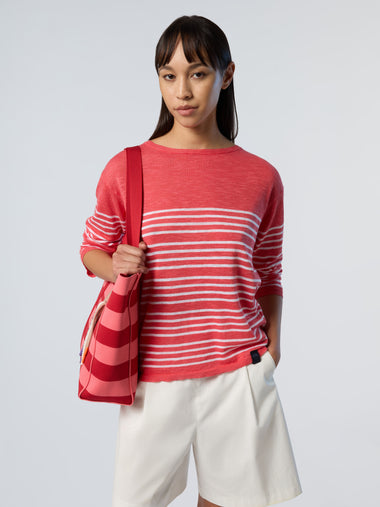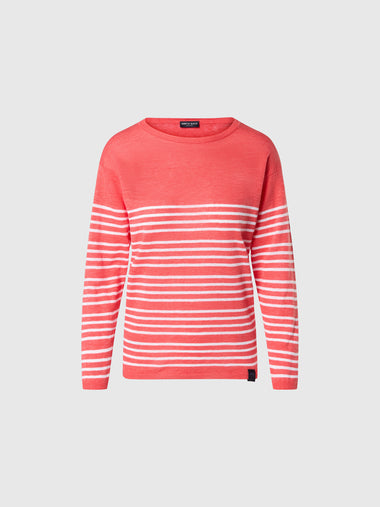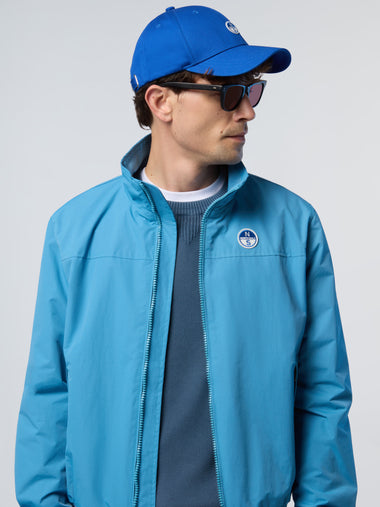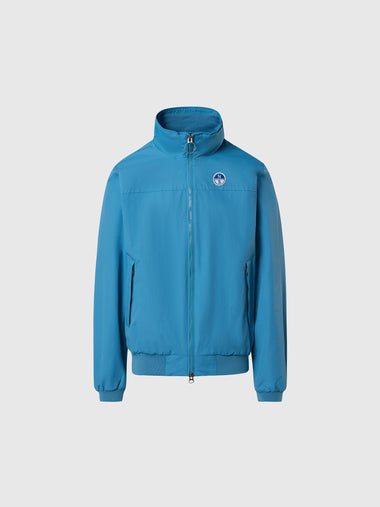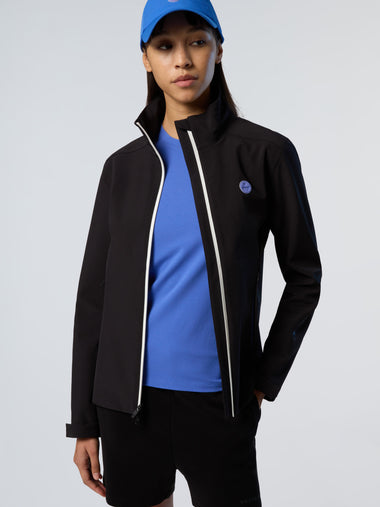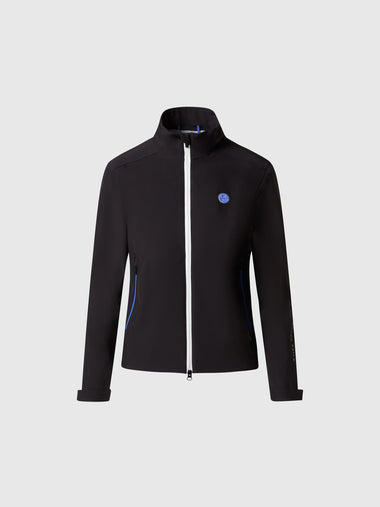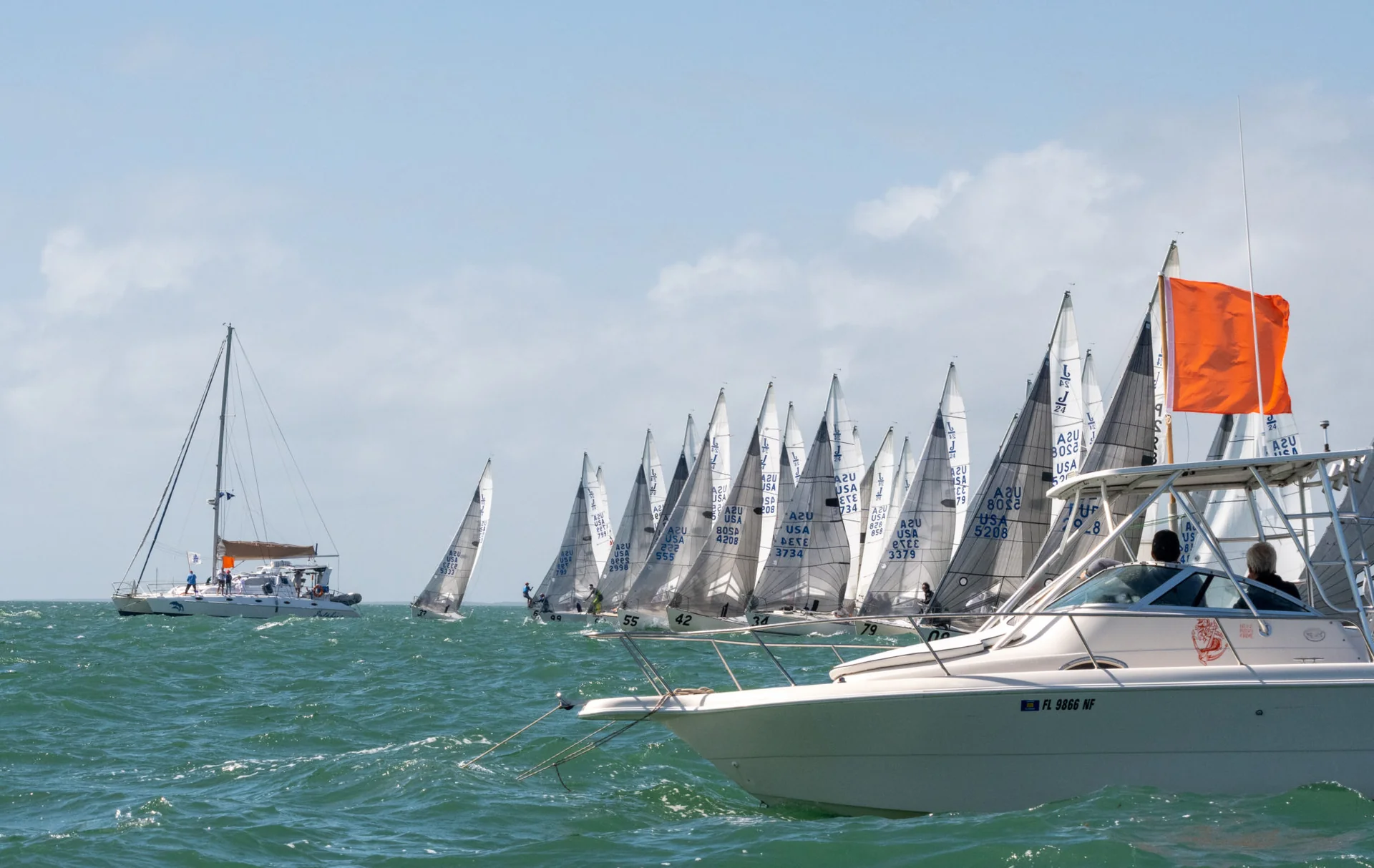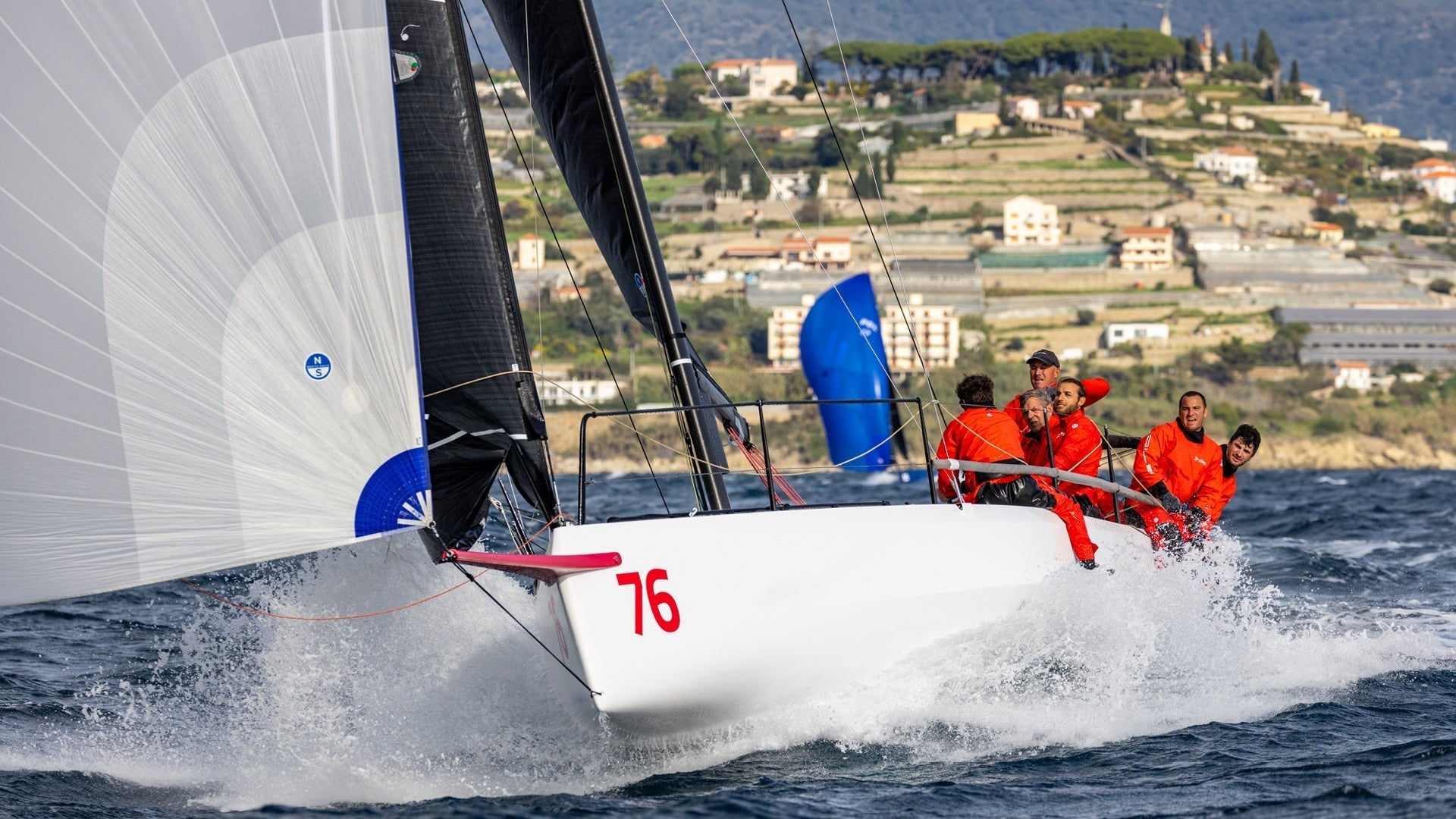J/24 RACING TIPS FOR ALL CONDITIONS
J/24 RACING TIPS FOR ALL CONDITIONS
Racing Takeaways: The 2021 Midwinter Championship
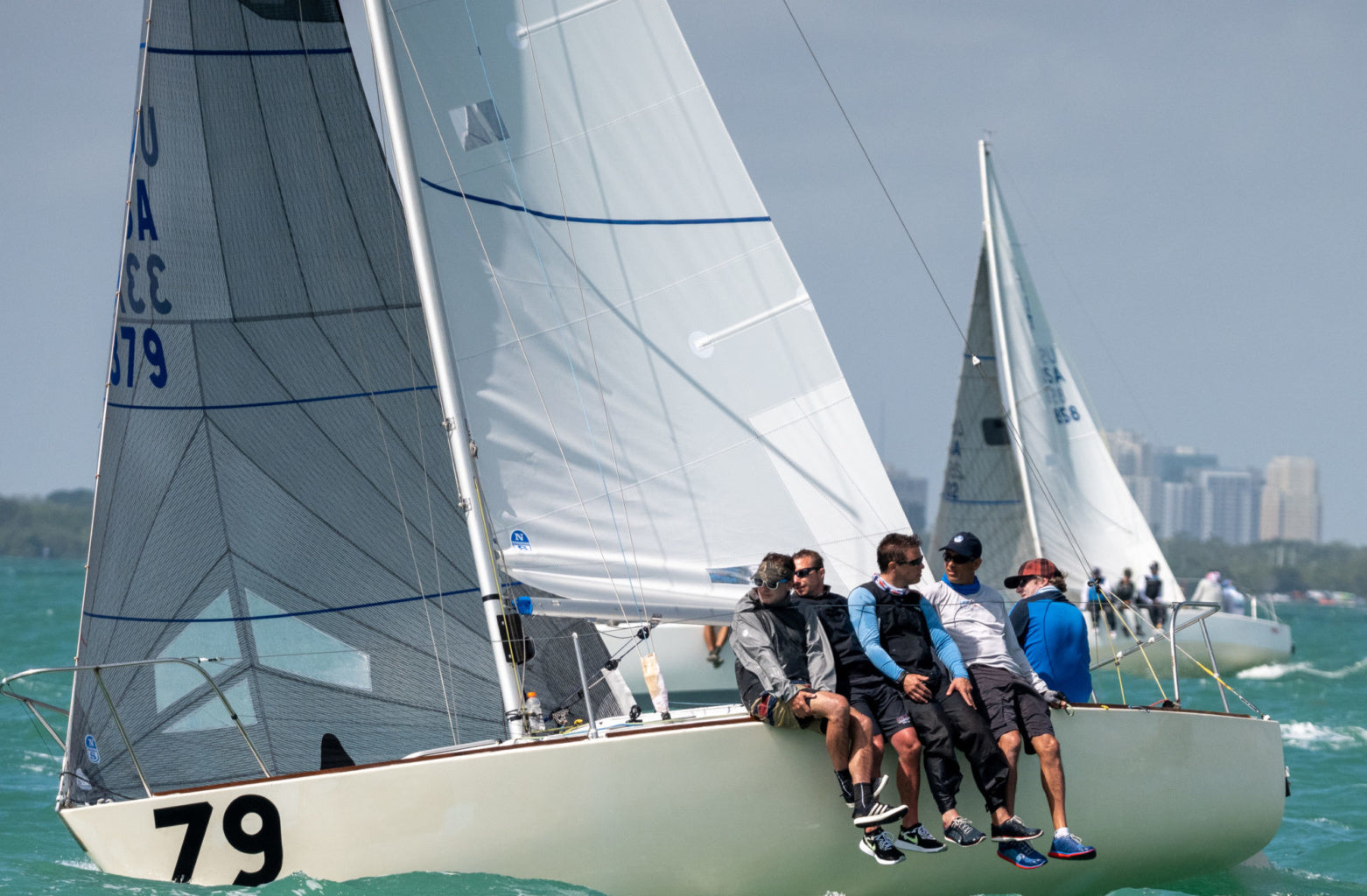
The 2021 Midwinter Championship in Miami, FL supplied a variety of conditions for the 29-boat fleet. North Experts with the help of Midwinters skipper John Mollicone broke down each race day by wind speed and explain the changes they made with their rig tune, body weight, crew roles, and sail trim. Although the racing took place in Florida, these tips can be related to any regatta coming up depending on wind conditions and sea state.
Tips for light to medium air: 6-10 knots
- Tiny bit of weather helm in under 6
- Consistent heel angle, always
- Send one or more down below to get low in chop
- More heel helps you stay powered up in flat water in the lightest winds
- Avoid getting close to other boats to eliminate chop and disturbed air
- 20/15 shroud tension
- Move the mast butt aft ⅜”
- Look for -3 fingers on the headstay
- 2.25 to 2.50 inch pre-bend on the mast
- Stay powered up and avoid the lulls!

In lighter conditions, the trimmer should stand down below and be agile and able to move up to the rail as the wind picks up. The trimmer controls the angle of heel the most. Two forward crew are last to go below if needed, but keep weight forward in light conditions.
Skipper/Trimmer Tips for lighter air:
- Trim the main in hard, two handed when fully powered up so you can point a little higher, 8 to 10 knots range with everyone hiking
- Trim the genoa 2-3” off the spreader tips when fully powered up, ease to 4-6” off spreader tips in the lulls.
- Move the genoa car one hole forward to power up the bottom of the jib.
North Expert Paul Abdullah commented on trim,
“I like to move off the rail and move forward. When I look at other boats who have their trimmers on the leeward side by the winch, it’s not long before we are sailing right by them. Body placement is key for the trimmer in light air. I avoid sitting to leeward by the winch, if your weight needs to be to leeward it is better to do that below deck.”
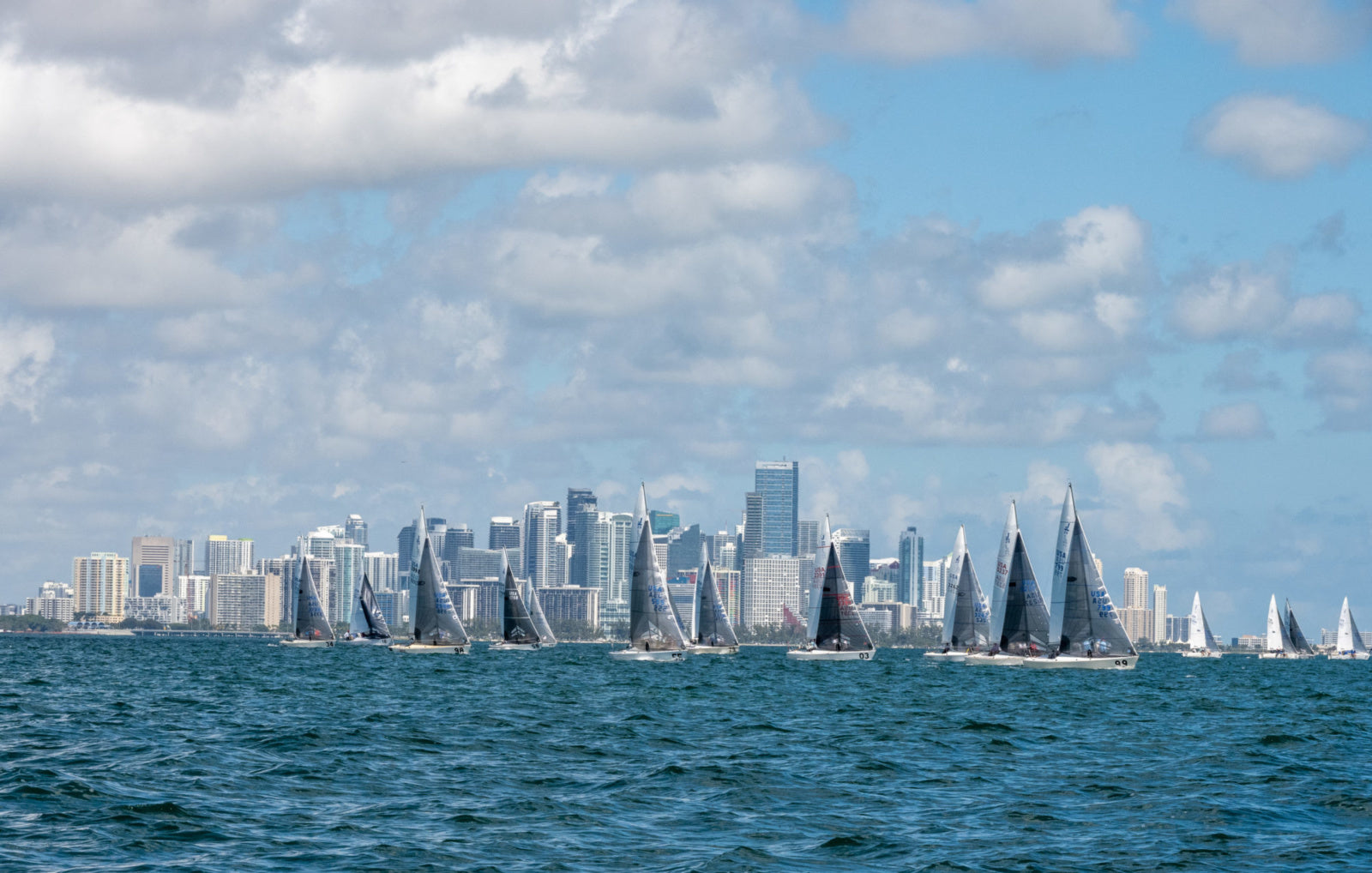
Trimming the Genoa: Medium to Heavy Air
“It is a common misconception to trim harder in more breeze, said John. This is not a solution. You actually point higher by easing out, sometimes a full foot off the spreader tip. If you see 8” off the spreader tip it’s not a bad thing if things are working for you.”
How can you tell?
- If the boat feels good, your speed is good, and you are playing the main and vang sheeting in the puffs, you will be in good shape.
- Skipper and trimmer should work together with sail trim.
- Never let the boat heel over too much. When you feel bound up, ease the genoa 5-6” off the spreader tips. Easing off the backstay will also help get your power back in the major lulls with the rig tight.
- Rig tuning tips: Medium to heavy air
- When you move your mast, 2 to 2.25” of prebend is always a good starting point.
- Headstay tension should go from 3 fingers to a tight 2 fingers.
- Having your backstay set up so you can move through a wider range is important.
“The mast butt on J24 is a powerful tool,” said North expert Nick Turney. “When the breeze increases you need to feel comfortable moving your mast. Ideally you move the mast at the dock before you leave. When you don’t make necessary adjustments to rig and mast, you will notice that you are losing punch. If your main is flattened too much, this is a direct indicator that your settings are not aligned.”

Tips for Breeze On and building: 13-18 knots
- 27/24 shroud tension
- When the wind builds, go plus 1/plus 1 – stick to full turns if possible. It’s easier to keep track.
- Moved mast butt forward, ⅜ to ½” depending on age and stiffness of mast and boat.
- If the lulls are big, you’ll need power. 27/24 is great for lulls and only a tad loose in the puffs.
The North Sails tuning guide is a great place to get your set up numbers.
Mainsail set up is important, especially in bigger breeze. If you notice wrinkles from all the clew up towards the spreaders at a 45-degree angle, this is a telltale sign that you need to go tighter on the rig, sometimes an up plus 1/plus 1 can help get your main looking better, which in turn allows it to work better. You will be able to pull on more backstay, and cunningham. The cunningham for example is not easily adjusted from the rail, so we minimized how much we moved our bodies because we needed weight out mostly, we would leave the cunningham as-is and ride it out. Another thing that is crucial is crew weight. Keeping it together and close makes hiking more effective.
With the mast settings the same as medium air conditions, it allows for depth in the mainsail while keeping the backstay tight. Weight aft together hiking hard is a good look.
When changing gears, it’s important to define your modes and make adjustments. It’s very important to stay powered up and transition through the modes.
Ask yourself: “What mode do we want to be in?”
- Height mode,
- normal mode (balanced and going well through the water),
- Or fast mode
What are the changes you have to make in the back of the boat to accomplish the different modes?
Trimmers typically call the speed, the tactician may override in certain instances. The driver has the mainsheet and backstay, the trimmer adjusts the genoa sheet accordingly, it’s a constant dialog. Together you are always making sure the boat is going full speed. If you feel like the boat is stuck ease the sails out and get it going again. When the boat stalls the boat goes sideways.
“In Miami for the Midwinters,” John commented, “5.4-5.6 was our normal boat speed. We had our bow down, and our backstay on. We looked more for 5.8 to 6.2 on our velocitek once we got going. It’s nice to gauge where you want to be and see what that feels like.”

When should we switch to the blade?
Start out with the genoa if you are on the fence. Try moving the mast butt ⅜ to ½” forward, which is a conservative move. Make sure your tension is adequate. In medium breeze 29/31 could work well depending on the age and stiffness of your mast.
Ask yourself:
- Can we go upwind without the main flogging?
- Does the boat feel balanced?
- Are we slipping sideways?
- Is our speed a problem?
- If things are out of balance, speed is a struggle, and your main is flogging, then it may be time to switch to the blade.
Paul Abdullah commented,
“Understanding the ability of your trimmer is the real question. If you cannot tack the genoa efficiently, then you have your answer.”
The blade is good if the conditions are right for it. The genoa gives you the power and punch for getting through waves. The blade can be sufficient enough if breezy and flat water.
When you are on the edge of the blade in 14-16 knots, you might need to consider a step down on the shrouds and jib lead forward to power up the Jib. Keep in mind, using the genoa at the top end of the wind range means you have to pull the halyard on harder, move the lead back one as you go tighter on the shroud tension.
“On a shifty day with flat water, the blade could be the best weapon of choice. It varies for every team, so you have to do what is best for you, depending on what you are comfortable with,” said John.

Upwind strategy
- Find the pressure
- Set yourself up for the long term play
- Get into the pressure before making a decision on your next move
- It’s OK to hang in a thin lane as long as its the long tack
- Try to figure out what the long tack is before the start so you can position yourself on the starting line
- It can be a high risk to win the pin and you might not be able to tack so you have to recognize that early on
- Choosing the midline works well if the pin is crowded. It can also open doors later on up the beat.
Minimize your maneuvers
Tacking with the genoa in mid-range conditions will result in ¾ boat length loss. Chop and puffy conditions tacks are costly using the genoa especially. We made sure our tacks counted. If we wanted to make a tactical decision, we made sure we were in the best pressure first.
Downwind Strategy
- Balance crew weight
- Get around the windward mark and ask yourself: do we want to stay high or go low? After the offset, are we jibing early?
- All things should be openly discussed as the pole is being put on and you have almost arrived to the offset.
- Steer clear of potential issues
- Identify: Is there anyone around us? Are we playing defense? Recognizing scenarios early and talking about it is the key to a successful windward mark rounding and setting up for a good downwind.

Settling in for the Downwind Leg
After the kite is set, it’s important to get settled in. Depending on location, remember to check for weeds. If it’s windy, send the lightest person back to do this. It is hard to drive and check for weeds, especially in heavier air conditions.
Crew weight Downwind
- Changes with weight will help steer the boat. The trimmer and driver are mostly in the same spots all the time downwind. Driver plays the main, sits to leeward. Trimmer stands up on the deck to trim.
- Tacticians can take the guy and face outboard to help trimmer.
- If it lightens up, the tactician would go below but generally stands in the companionway.
- Bow guy went side to side as needed, twings could also move with bowman as both are more agile.
- Keep your weight outboard out to the sides.
- Keep the boat flat so if the wind increases, there is no risk of the driver losing steering due to instability.
- If it is super windy you may consider two forward crew sitting to leeward to help balance.
“Weather heel downwind pole back is my favorite,” John said. “It’s fast.”
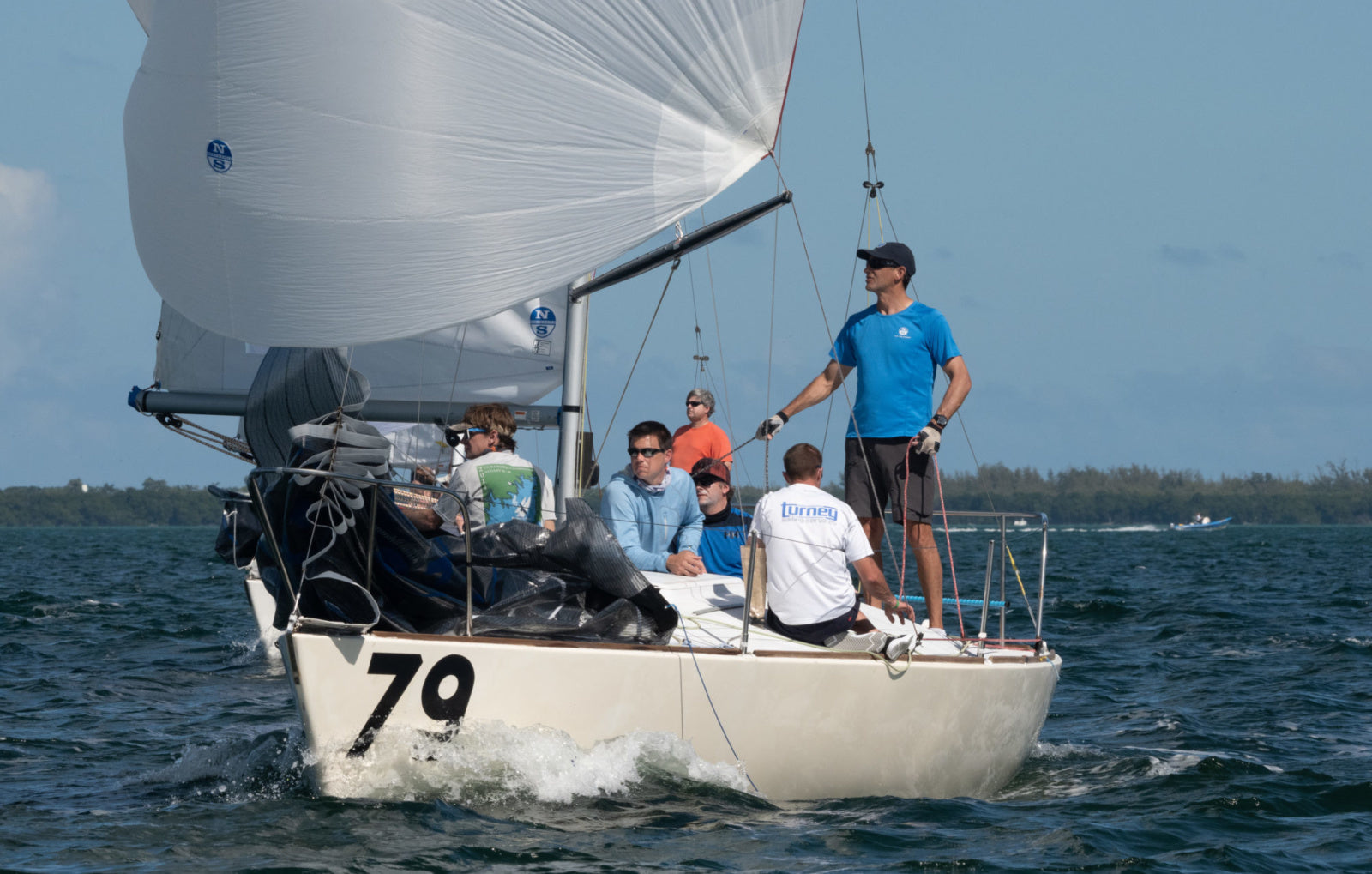
What Gate to Choose?
- Find the path of least resistance.
- Figure out which side is lifted, and try to round the side that allows you to immediately be on the long tack.
- Ask yourself: where’s the competition and where is there less traffic?
Tips for Breezy Conditions Downwind
- Bring both twings down, especially on the jibes.
- Stacking the leeward (bow and mast) rail is a huge weapon in breeze downwind. Too much weather heel is out of control.
- Vang on- be all over it. You need more than normal if it’s breeze-on conditions.
- Backstay on just a little for stability.
- Broad reach more, don’t sail DDW in puffs or by the lee if things are getting dicey.

For the Miami Midwinters, the winners used North Sails Fathead mainsail, DX-7TT Genoa, SRB jib, and FR2 spinnaker. Have questions about optimizing your inventory? Get in touch with a North Sails J/24 expert today.
Thank you Chris Howell for your support of the class on and off the water!
Miss the Midwinters Full Webinar Recap? Rewatch and rewind at your own convenience!






